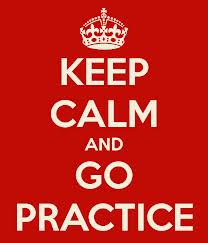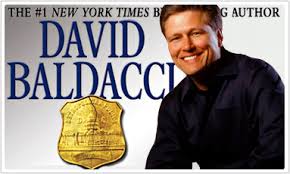This guest post is by Carolyn O’Hara and originally appeared in the Harvard Business Review. Thanks, Carolyn!
 The power of story-telling is under appreciated and it’s effectiveness in a workplace environment is something that all leaders must know.
The power of story-telling is under appreciated and it’s effectiveness in a workplace environment is something that all leaders must know.
We tell stories to our coworkers and peers all the time — to persuade someone to support our project, to explain to an employee how he might improve, or to inspire a team that is facing challenges. It’s an essential skill, but what makes a compelling story in a business context? And how can you improve your ability to tell stories that persuade?
What the Experts Say
In our information-saturated age, business leaders “won’t be heard unless they’re telling stories,” says Nick Morgan, author of Power Cues and president and founder of Public Words, a communications consulting firm. “Facts and figures and all the rational things that we think are important in the business world actually don’t stick in our minds at all,” he says. But stories create “sticky” memories by attaching emotions to things that happen. That means leaders who can create and share good stories have a powerful advantage over others. And fortunately, everyone has the ability to become a better storyteller. “We are programmed through our evolutionary biology to be both consumers and creators of story,” says Jonah Sachs, CEO of Free Range Studios and author of Winning the Story Wars. “It certainly can be taught and learned.” Here’s how to use storytelling to your benefit.
Start with a message
 Every storytelling exercise should begin by asking: Who is my audience and what is the message I want to share with them? Each decision about your story should flow from those questions. Sachs says that leaders should ask, “What is the core moral that I’m trying to implant in my team?” and “How can I boil that down to a compelling single statement?” For instance, if your team is behaving as if failure is not an option, you might decide to impart the message that failure is actually the grandfather of success. Or if you are trying to convince senior leaders to take a risk by supporting your project, you could convey that most companies are built on taking smart chances. First settle on your ultimate message; then you can figure out the best way to illustrate it.
Every storytelling exercise should begin by asking: Who is my audience and what is the message I want to share with them? Each decision about your story should flow from those questions. Sachs says that leaders should ask, “What is the core moral that I’m trying to implant in my team?” and “How can I boil that down to a compelling single statement?” For instance, if your team is behaving as if failure is not an option, you might decide to impart the message that failure is actually the grandfather of success. Or if you are trying to convince senior leaders to take a risk by supporting your project, you could convey that most companies are built on taking smart chances. First settle on your ultimate message; then you can figure out the best way to illustrate it.
Mine your experiences
 The best storytellers look to their own memories and life experiences for ways to illustrate their message. What events in your life make you believe in the idea you are trying to share? “Think of a moment in which your own failures led to success in your career, or a lesson that a parent or mentor imparted,” says Sachs. “Any of these things can be interesting emotional entry points to a story.” There may be a tendency not to want to share personal details at work, but anecdotes that illustrate struggle, failure, and barriers overcome are what make leaders appear authentic and accessible. “The key is to show your vulnerability,” says Morgan.
The best storytellers look to their own memories and life experiences for ways to illustrate their message. What events in your life make you believe in the idea you are trying to share? “Think of a moment in which your own failures led to success in your career, or a lesson that a parent or mentor imparted,” says Sachs. “Any of these things can be interesting emotional entry points to a story.” There may be a tendency not to want to share personal details at work, but anecdotes that illustrate struggle, failure, and barriers overcome are what make leaders appear authentic and accessible. “The key is to show your vulnerability,” says Morgan.
Don’t make yourself the hero
 That said, don’t make yourself the star of your own story. “A story about your chauffeured car and having millions in stock options is not going to move your employees,” says Morgan. You can be a central figure, but the ultimate focus should be on people you know, lessons you’ve learned, or events you’ve witnessed. And whenever possible, you should endeavor to “make the audience or employees the hero,” says Morgan. It increases their engagement and willingness to buy in to your message. “One of the main reasons we listen to stories is to create a deeper belief in ourselves,” says Sachs. “But when the storyteller talks about how great they are, the audience shuts down.” The more you celebrate your own decisions, the less likely your audience will connect with you and your message.
That said, don’t make yourself the star of your own story. “A story about your chauffeured car and having millions in stock options is not going to move your employees,” says Morgan. You can be a central figure, but the ultimate focus should be on people you know, lessons you’ve learned, or events you’ve witnessed. And whenever possible, you should endeavor to “make the audience or employees the hero,” says Morgan. It increases their engagement and willingness to buy in to your message. “One of the main reasons we listen to stories is to create a deeper belief in ourselves,” says Sachs. “But when the storyteller talks about how great they are, the audience shuts down.” The more you celebrate your own decisions, the less likely your audience will connect with you and your message.
Highlight a struggle
 A story without a challenge simply isn’t very interesting. “Good storytellers understand that a story needs conflict,” says Morgan. Is there a competitor that needs to be bested? A market challenge that needs to be overcome? A change-resistant industry that needs to be transformed? Don’t be afraid to suggest the road ahead will be difficult. “We actually like to be told it’s going to be hard,” says Morgan. “Smart leaders tell employees, ‘This is going to be tough. But if we all pull together and hang in there, we’ll achieve something amazing in the end.’” A well-crafted story embedded with that kind of a rallying cry means “you don’t have to demand change or effort,” says Sachs. “People will become your partners in change,” because they want to be part of the journey.
A story without a challenge simply isn’t very interesting. “Good storytellers understand that a story needs conflict,” says Morgan. Is there a competitor that needs to be bested? A market challenge that needs to be overcome? A change-resistant industry that needs to be transformed? Don’t be afraid to suggest the road ahead will be difficult. “We actually like to be told it’s going to be hard,” says Morgan. “Smart leaders tell employees, ‘This is going to be tough. But if we all pull together and hang in there, we’ll achieve something amazing in the end.’” A well-crafted story embedded with that kind of a rallying cry means “you don’t have to demand change or effort,” says Sachs. “People will become your partners in change,” because they want to be part of the journey.
Keep it simple
 Not every story you tell has to be a surprising, edge-of-your-seat epic. Some of the most successful and memorable stories are relatively simple and straightforward. Don’t let needless details to detract from your core message. Work from the principle that “less is more.” One of the biggest mistakes you can make is “putting in too much detail of the wrong kind,” says Morgan. Don’t tell your audience what day of the week it was, for instance, or what shoes you were wearing if it doesn’t advance the story in an artful way. But transporting your audience with a few interesting, well-placed details — how you felt, the expression on a face, the humble beginnings of a now-great company — can help immerse your listeners and drive home your message.
Not every story you tell has to be a surprising, edge-of-your-seat epic. Some of the most successful and memorable stories are relatively simple and straightforward. Don’t let needless details to detract from your core message. Work from the principle that “less is more.” One of the biggest mistakes you can make is “putting in too much detail of the wrong kind,” says Morgan. Don’t tell your audience what day of the week it was, for instance, or what shoes you were wearing if it doesn’t advance the story in an artful way. But transporting your audience with a few interesting, well-placed details — how you felt, the expression on a face, the humble beginnings of a now-great company — can help immerse your listeners and drive home your message.
Practice makes perfect
 Storytelling is a “real art form” that requires repeated effort to get right, says Morgan. Practice with friends, loved ones, and trusted colleagues to hone your message into the most effective and efficient story. And remember that the rewards can be immense. “Stories are the original viral tool,” says Sachs. “Once you tell a very compelling story, the first thing someone does is think, ‘Who can I can tell this story to?’ So, for the extra three minutes you spend encoding a leadership communication in a story, you’re going to see returns that last for months and maybe even years.”
Storytelling is a “real art form” that requires repeated effort to get right, says Morgan. Practice with friends, loved ones, and trusted colleagues to hone your message into the most effective and efficient story. And remember that the rewards can be immense. “Stories are the original viral tool,” says Sachs. “Once you tell a very compelling story, the first thing someone does is think, ‘Who can I can tell this story to?’ So, for the extra three minutes you spend encoding a leadership communication in a story, you’re going to see returns that last for months and maybe even years.”
Principles to Remember
 Do:
Do:
- Consider your audience — choose a framework and details that will best resonate with your listeners.
- Identify the moral or message your want to impart.
- Find inspiration in your life experiences.
 Don’t:
Don’t:
- Assume you don’t have storytelling chops — we all have it in us to tell memorable stories.
- Give yourself the starring role.
- Overwhelm your story with unnecessary details.
 Case Study #1: Embed conflict to motivate and inspire
Case Study #1: Embed conflict to motivate and inspire
Josh Linkner was worried his employees were becoming complacent. Then the CEO of ePrize, a Detroit-based interactive promotions company, Linkner had seen his company become the dominant leader in the online promotions industry almost overnight. In the mid 2000s, “we had double and triple growth every year,” he says. “I became worried that we would start clinging to our previous success instead of forging new success, and that our creativity would decline.”
“Greatness is often achieved in the face of adversity,” he says, “but we didn’t have a competitor to gun against.”
So he made up a fake nemesis. At an all-company meeting, he stood up and announced that there was a brash new competitor named Slither. “I told everyone they were bigger than us, faster than us, and more profitable,” he says. “Their investors had deeper pockets. Their footprint was better, and they were innovating at a pace I’d never seen.”
The story was greeted with chuckles around the room (it was obvious the company was a ruse), but the idea soon became embedded within ePrize’s culture. Executives kept reinforcing the Slither story with fake press releases about their competitor’s impressive quarterly earnings or infusions of capital, and soon the urge to best the imaginary rival began to drive improved performance.
“It inspired creativity,” Linkner says. “In brainstorming sessions, we used Slither as the foil. Instead of saying, ‘OK, guys, we have to reduce our production time. How are we going to do that?’ I would say, ‘The folks over at Slither just shaved two days out of their cycle time. How do you think they did it?’ The white boards filled with ideas.”
 Case Study #2: Anchor the story in your personal experiences
Case Study #2: Anchor the story in your personal experiences
Vince Molinaro, managing director of the leadership practice at Knightsbridge Human Capital Solutions, Canada’s biggest HR advisory, tells clients he knows exactly when his career direction snapped into focus. It was at his first job out of college, with an organization that helped needy individuals get back on their feet. Vince loved the mission but found the atmosphere uninspiring. “Everyone just went through the motions,” he says. “I remember thinking, ‘Is this it? Is this what working in the real world is like?’”
A senior manager named Zinta sensed that Vince wanted to have a bigger impact, and asked him to join several likeminded colleagues on a committee to make their workplace a more positive environment. They began to make subtle changes, and coworkers’ attitudes started to improve. “I saw firsthand how a single manager can change the culture of a place,” he says.
Then Zinta was diagnosed with aggressive lung cancer. In her absence, the office culture began to revert back. On a visit to see Zinta in the hospital, Vince told her about the disappointing turn of events. She surprised him with a confession: Since she had never smoked and had no history of cancer in her family, she was convinced that her disease was a direct function of putting up with a toxic work environment for so long.
Shortly after, Zinta sent Vince a letter telling him he would be faced with an important choice throughout his life. He could allow the negative attitudes of others to influence his behavior, or pursue professional goals because of the sense of personal accomplishment they offered. “In her time of need she reached out to me,” he says. “She was a mentor to me even though she didn’t need to be.”
Two weeks later, Zinta passed away. But the letter changed Vince’s life, inspiring him to leave his job and start his own consulting business devoted to helping people be better leaders. “I’ve seen the kind of climate and culture that a great leader can create,” he says. “For the last 25 years, I’ve tried to emulate that.” He still has Zinta’s letter.
When Vince first began sharing this story with his leadership clients, he was taken aback by their reaction. “There was a connection they had to me that was really surprising, he says. “It’s like they got me in ways that I wasn’t able to directly communicate.”
“It also gets them thinking about their own story and the leaders that have influenced them. In my case, it was a great leader. Sometimes it’s the really bad ones you learn a lot from.” Whatever the case, he says, the power comes from sharing your story with the people you lead so they better understand what motivates you.
 This post originally appeared in the July 30, 2014 issue of Harvard Business Review. I thought it was so good that I re-posted it here on DyingWords.net. The author, Carolyn O’Hara, is a writer and editor based in New York City. She’s worked at The Week, PBS News Hour, and Foreign Policy.
This post originally appeared in the July 30, 2014 issue of Harvard Business Review. I thought it was so good that I re-posted it here on DyingWords.net. The author, Carolyn O’Hara, is a writer and editor based in New York City. She’s worked at The Week, PBS News Hour, and Foreign Policy.
Thanks, Carolyn!
 Statistics show that the largest selling book genre is now crime-thrillers. They’ve surpassed celebrity bios, food & drink, erotica, historicals, and even the long reigning queen of fiction… romance.
Statistics show that the largest selling book genre is now crime-thrillers. They’ve surpassed celebrity bios, food & drink, erotica, historicals, and even the long reigning queen of fiction… romance. If you think about the great crime-thrillers that have survived the past century and are still being read, it’s because they are terrific stories. Murder On The Orient Express (Agatha Christie) The Big Sleep (Raymond Chandler) Sherlock Holmes (Arthur Conan Doyle) The Talented Mr. Ripley (Patricia Highsmith) and The Maltese Falcon (Dashiell Hammett) are thrilling crime stories.
If you think about the great crime-thrillers that have survived the past century and are still being read, it’s because they are terrific stories. Murder On The Orient Express (Agatha Christie) The Big Sleep (Raymond Chandler) Sherlock Holmes (Arthur Conan Doyle) The Talented Mr. Ripley (Patricia Highsmith) and The Maltese Falcon (Dashiell Hammett) are thrilling crime stories. Crime-thriller queen Val McDermid puts it like this. “A crime-thriller gives you an adrenalin rush. It’s exciting, suspense-laden, and you can’t help wondering what’s going to happen next. But you know it’s fiction and that the protagonist is going to make it out okay in the end.” She says ” We live in a society increasingly fragmented and alienated. People fell isolated and anxious. They find reassurance in crime-thrillers because they know that in the end the world will be put right.”
Crime-thriller queen Val McDermid puts it like this. “A crime-thriller gives you an adrenalin rush. It’s exciting, suspense-laden, and you can’t help wondering what’s going to happen next. But you know it’s fiction and that the protagonist is going to make it out okay in the end.” She says ” We live in a society increasingly fragmented and alienated. People fell isolated and anxious. They find reassurance in crime-thrillers because they know that in the end the world will be put right.”
















